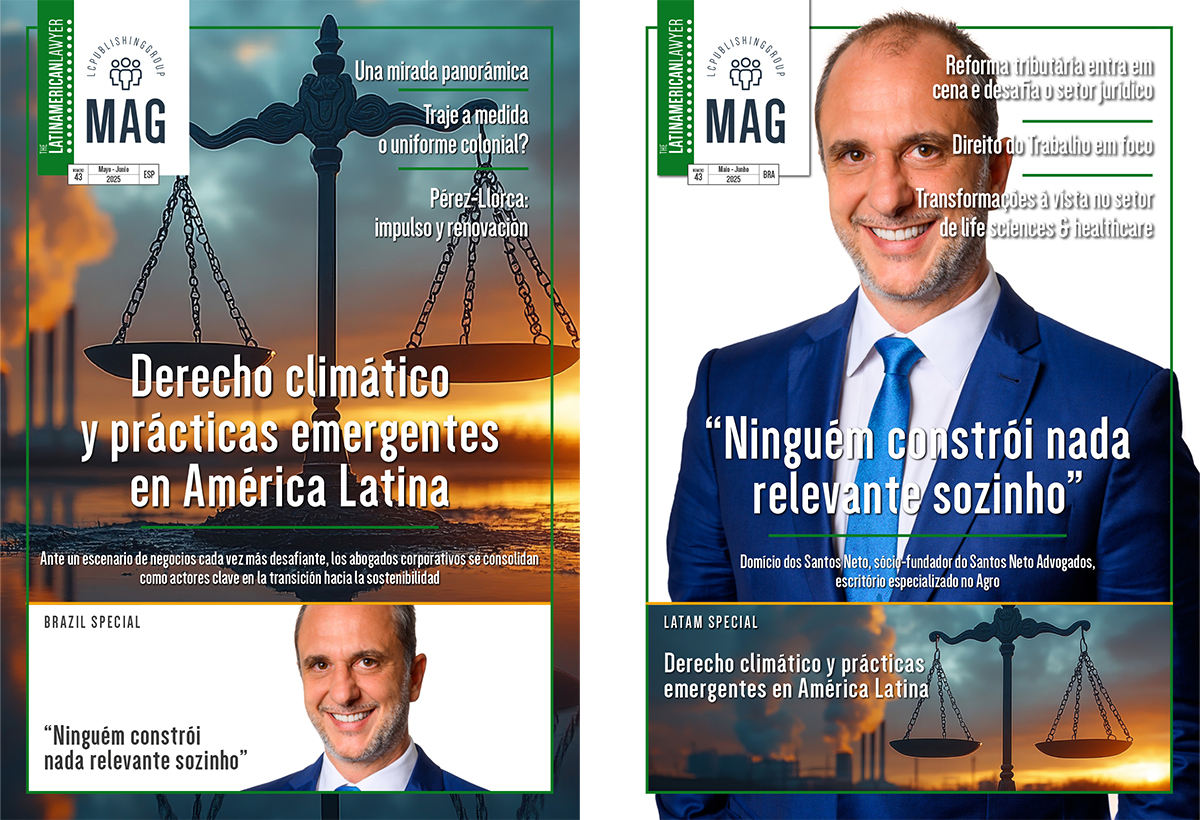Banks and lenders targeting infrastructure and renewable energy projects in Latin America – Baker & McKenzie
With new funds being established to invest in Latin American markets, demand for international tax planning advice is on the increase
Infrastructure and renewable energy projects in Latin America that are in need of financing are whetting the appetite of banks and non-traditional lenders from Japan, Europe, the US and Canada, according to José Morán, partner at Baker & McKenzie in Chicago and chair of the firm’s North American banking, finance and major projects practice group.
He adds that many funds are targeting stable and long-term rates of return and are therefore focused on infrastructure projects that facilitate economic growth. Consequently, energy and gas transportation projects, for example, are attractive propositions. New investment funds are also being created with a view to investing in a number of markets – including Latin America – and this is driving high demand for advice on international tax planning, according to Morán.
“Japanese banks based in New York continue to dominate the league tables for project financing and syndicated lending for Latin American projects,” Morán says. “This includes projects in many sectors, including renewable energy and transportation infrastructure.” Meanwhile, Morán adds that European lenders are taking advantage of existing relationships “developed in Spain and other European jurisdictions with many sponsors” to finance such projects.
In addition, US investment banks are providing major tranches of financing to transport infrastructure developments in Latin America, says Morán. “US investment banks have made large and firm commitments to Colombian transportation projects, including Goldman Sachs’ financing of the construction of the Giradot-Puerto Salgar, Pacífico 3 and the Barranquilla-Cartagena corridor,” he adds.
Such projects offer major opportunities for law firms that have established relationships with lenders in Tokyo, in particular, Morán says. “Law firms with long-standing relationships with Japanese banks and a strong presence in the US and Latin America offer unique integrated teams across The Americas,” he adds. In addition, the decrease in project finance provided by banks is creating opportunities for other players, Morán says. “Debt infrastructure funds are taking advantage of the retrenching by banks from infrastructure project financing due to Basel III capital requirements.”
Morán believes European funds with a track record of investing in US projects will turn their attention to similar investments in Latin America. “Funds based in Europe that have taken large tickets in infrastructure financing projects in the US will probably start lending into Latin America and therefore competing face-to-face with traditional project lenders and commercial lenders.”
Latin American funds and Canadian retirement and pension funds are also expressing interest in project financing in Latin America, Morán says. “Such funds continue to seek stable and long-term rates of return by targeting investments with reliable revenue streams that have a link to inflation and participate in economic growth,” he says. “Those are generally found in rate or tariff-based investments such as gas transportation pipelines, long-term concessions or feed-in tariff programmes related to the energy sector.” With regard to the Canadian funds, Morán adds that they have large amounts of money to invest and are specifically targeting energy sector projects in stable countries. In addition, Australian funds with a track record of investing in US transport infrastructure projects are now targeting Latin American schemes.
Tax advice in demand
Morán adds that, when establishing a fund, international tax planning advice is crucial. He says such advice is “one of the most in-demand services as it is necessary for funds to receive investment from Europe, the USA and elsewhere”.
The creation of Latin American funds is a new trend, according to Morán. He says the structure of some of these funds is dependent on principally two aspects: the location of the potential investors in the fund and where the assets are located – for example, some funds have expertise in the Brazilian energy sector, but are set up in Chile as the business environment is more favourable. Meanwhile, Morán says governmental change in Argentina has reactivated the country’s capital and credit markets. China is also a key investor in Latin America, according to Morán. He adds that Chinese investors tend to develop relationships with countries that offer oil in exchange for infrastructure – for example, Ecuador, Venezuela or Colombia.















